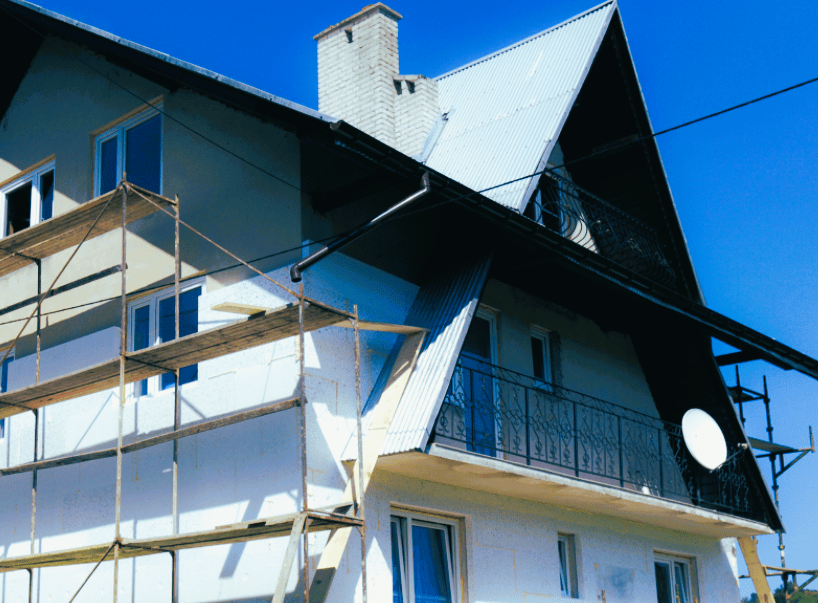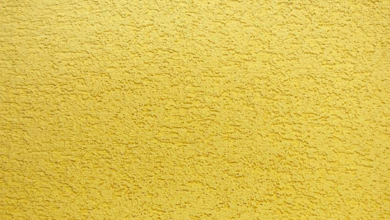Stucco Over Foam Problems

Stuccoing over foam board may appeal to you for two reasons. First and foremost, you enjoy stucco’s low-maintenance and long-lasting finish. Second, use foam to increase your home’s R-value, or insulation.
In the industry, stucco over foam is known as the exterior insulated finish system (EIFS). In some parts of Nevada and California, it is known as the one-coat system.
This system is typically found in older homes. Nonetheless, it has been deemed contentious due to the numerous associated issues.
It is unusual to see stucco applied over foam to insulate or finish the exterior of a house. Nonetheless, such a setup is likely to cause significant problems.
Several common issues with stucco over foam will be addressed in the following post.
1. The foam board is supported by the weight of the stool against the walls.
Stucco weighs approximately ten pounds per square foot. Can you imagine the weight it will carry when attached to a foam board?
No amount of nailing or adhesives will keep either material from coming away from the wall. The reason for this is that the foam board will most likely be unable to support the weight of the stucco. The application of stucco on top of foam guarantees failure.
2. Adhesion Problems are certain.
If you thought your weight was the issue, you should wait to learn about adhesion. I don’t understand how you plan to attach stucco to foam. Will you use mortar? Probably not. Stronger adhesives and longer nails will be required to keep the two pieces together in these conditions.
It is highly unlikely that these two will function. As a result, the structure may need to be reinforced with a metal lath.
3. The stucco will eventually crack.
Without a proper EIFS system, the stucco will eventually crack. Regardless of the material’s durability, stucco must be applied to a solid, structurally sound surface. We can all agree that foam board is not a very durable surface.
4. Mould can grow on foamboard.
Does stucco not absorb water? This has been a hotly debated issue for decades. We won’t go over this in great detail. Research has shown that stucco can allow water to seep through.
After some time, water will seep into the foam board via the stucco, creating an ideal environment for mold to grow. The day you consider demolishing your wall, you will discover mold.
5. Don’t try to do it yourself.
If you have the right tools and knowledge, you can complete many construction projects on your own. Unfortunately, this is not one of them. Putting stucco over foam might appear to be a simple task. However, this is a job best left to licensed contractors who provide guarantees for their work.
As previously stated, the EIFS system’s high failure rate has made it notoriously controversial. Simply put, stucco applied over foam will fail and result in extensive and costly repairs. This building project is too large for you to handle alone.
If you need stucco installed over foam, choose a reputable company that adheres to all manufacturer guidelines and offers a warranty in case anything else goes wrong. Even if it was professionally installed, there is still a high chance of error.
6. Moisture Related Damage
If you thought mold growth on the board was the only result of water damage when stuccoing over foam, you’d be mistaken. As water seeps into the stucco, it passes through the foam and settles on the wooden frame.
As you may already be aware, wood rots when exposed to water for an extended period of time. When the wood rots, so does the sheathing. A rotten house structure could be yours in due time.
7. It softens the house’s exterior aesthetic.
When applying the stucco, leave very little room for the foam to move. Because of the system’s thinner construction, the exterior of your home is particularly vulnerable to a severe impact.
8. The market value of your home may be affected.
After reading about all of these issues, are you still interested in purchasing a house with stucco supported by foam? This is the impact stucco applied over foam has on a home’s resale value.
Many prospective buyers will pass over your home if you decide to sell it because no one wants to deal with these issues.
Do you believe that stuccoing over foam will resolve these issues?
As previously mentioned, stucco covering foam board is an unusual choice for exterior insulation or decoration.
Spray foam between the walls to improve insulation. The conventional method for decorating a structurally sound surface consists of applying three coats of stucco.
However, as is common knowledge, there will always be issues with a construction project. To avoid the problems we mentioned above when installing stucco over foam, follow these steps:
I recommend using stiff foam boards as a starting point. Several types of foam can be used before stucco. There are two examples: XPS and EPS. However, polystyrene foam boards outperform their counterparts in terms of rigidity and water resistance.
- Cover the plywood that is securely fastened to the studs with your preferred foam board. This ensures that the surface is strong enough to support the weight of the stucco.
Plywood can be protected from rot and water damage by applying a liquid moisture barrier.
A plywood subfloor beneath the foam board will also prevent any movement that could cause the stucco to crack. To secure the foam board, use a strong adhesive.
It may be tempting to use a thicker foam board in order to achieve a higher R-value. However, it is recommended that you use at least one inch thick foam board.
- Stucco should not be used on top of foam board. Cover it with construction paper. There are two situations where building paper is preferable to stucco or foam.
One is to follow the rules outlined in the majority of our municipal ordinances. Construction paper also serves as a drain plane. Those who live in areas prone to heavy rainfall can be confident that the building paper will allow water to easily permeate without contaminating the foam board concealed beneath.
- The stucco can then be applied and allowed to cure.
Professional contractors should also follow these protocols. If they take a different approach, make sure they emphasize the importance of each stage.
If the contractor you’re working with offers a warranty, you can rest easy. Furthermore, the thickness of the stucco and foam board determines the need for a metal lath.

